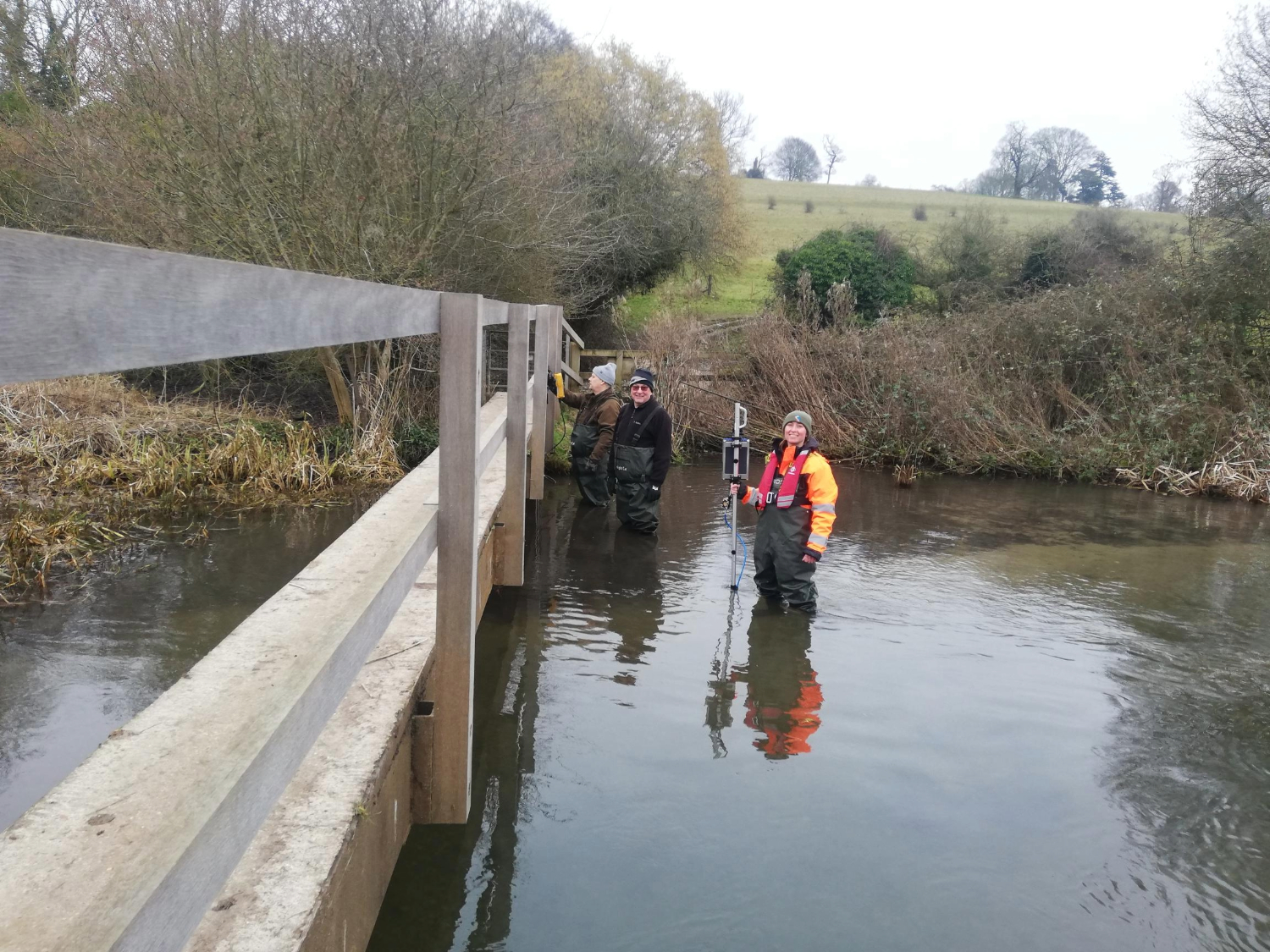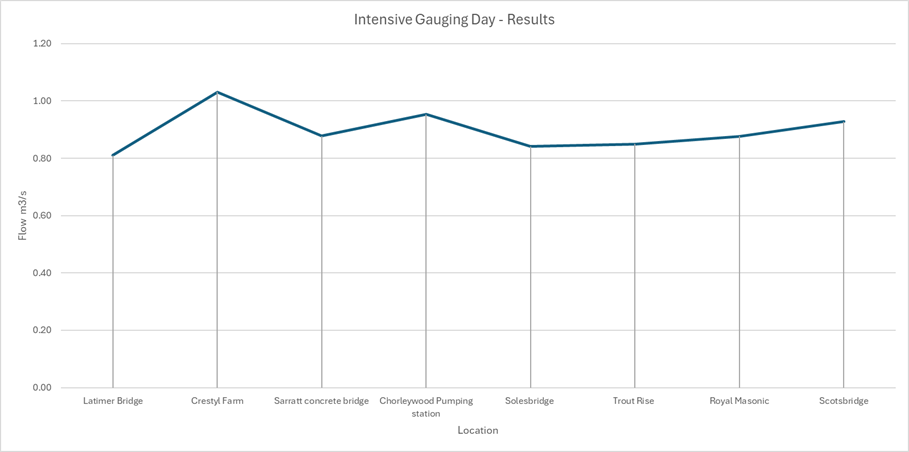The River Chess Association (RCA) monitors the flow of the River Chess at various locations along the river on a regular basis but can usually do one or two sites in a day due to the time-consuming nature of the process. An intensive gauging day was organised by the RCA on 13 March 2025 to get a clearer picture of the “losing reach” of the Chess where the flow of water is lower than in upstream locations. We believe that a proportion of the water is being diverted away from the river in this area.
FDRI field technician Jasmine Hughes was able to join the RCA with the aim of gathering information about the sites. Together, the RCA and FDRI conducted flow gauging at 8 locations.

